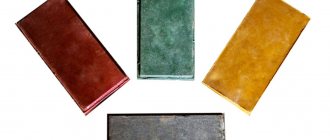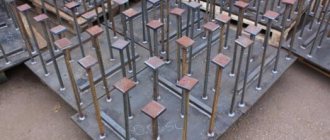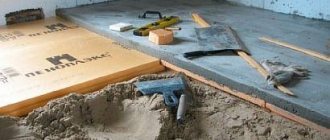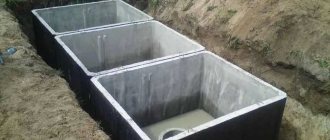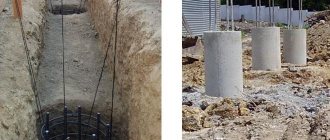Technology of laying tiles on sand
The technology for laying polymer sand tiles with your own hands on a sand cushion consists of several main stages. To implement it, you need to use the following tools:
- bayonet shovel;
- container (bucket) for creating a solution;
- knife;
- rubber mallet;
- watering can.
Methods of laying polymer tiles.
Step-by-step instructions for performing the work:
- The first step is to remove the layer of soil; the removal depth is 15-20 cm, which is fully consistent with the bayonet of a regular shovel.
- Then the surface is carefully leveled and leveled, and the slope must be observed during work.
- The leveled area obtained as a result of the first steps is compacted.
- Special grooves are created into which the curb stone will be installed and soil will be poured. The bottom of the grooves is also compacted.
- A layer of sand up to 5 cm thick is poured into the ditch for borders. The ditch is thoroughly spilled with water and compacted.
- Marking work is being carried out with curb lines. For this operation, a cord is specially tensioned on pegs driven into the ground.
- You need to pour a concrete pad and install curb stones yourself.
- Geotextiles are placed on specially prepared earthen soil (pre-compacted). This operation is of paramount importance on weak heaving soils. The sheets of the material used must be laid one on top of the other, overlapping by 15 cm. To prevent the edges from creasing, they are simply secured with adhesive tape.
- Sand is poured layer by layer. Each sand layer is watered with water from a hose and compacted again, while leveling is carried out taking into account the required slope.
- Polymer sand stones can be laid in two different ways.
Do-it-yourself stones are installed on a leveled sandy base. To level the tiles in a horizontal plane, a rubber mallet is used, which is not capable of damaging the product itself. As for the seams, they should not exceed 3-5 mm.
A reinforcing mesh with a cell size of at least 50x50 mm is preliminarily laid on top of the previously compacted sand. Then you need to pour a whole layer of dry cement-sand mixture. The ratio of sand and cement should be 3:1. Using a watering can, moisten the layer, then lay polymer sand tiles.
Sand is scattered onto the tiles laid using one of the methods, which should fill all the seams between the stones.
Technology for laying polymer tiles on crushed stone
Tools for laying tiles.
This technology has certain features. To implement all stages of work, it is necessary to use the following tools:
- bayonet shovel;
- container (bucket) for creating a solution;
- knife;
- watering can;
- a special brush with hard bristles;
- water hose.
The sequence of operations is as follows:
- Carefully remove the top layer of soil.
- All other operations up to this point are performed identically to the technology of laying polymer tiles on sand.
- It is necessary to pour crushed stone or gravel of medium size (from 20 to 400 mm) over the entire leveled area, which is used for laying polymer-sand paving slabs. This pillow must be compacted thoroughly.
- A concrete screed is made over the crushed stone; its thickness is 5-10 cm. It is imperative to maintain the slope.
- The tiles should be laid on a cement-sand mortar. You can also use tile adhesive. For these works, you can use concrete grade M150. The ratio of the main components of the solution is as follows: cement - 1 part by weight, sand - 3 parts by weight. If we talk about reliability, then the use of glue is considered more practical and durable.
- If you lay it on a mortar of sand and cement, then the “bed” for installing the tiles should have a thickness of 20-30 mm.
- After completing all work on laying the products, sand must be spread over the surface of the site. Using a special brush with stiff bristles, grout all the seams. As an alternative to sand, you can take a dry mixture of sand and cement, which must be prepared in a ratio of 1:3.
https://youtube.com/watch?v=MGsL23AgJEA
After grouting all the seams, you need to spray the area with water; it is convenient to use a hose for this purpose. When using a mixture of cement and sand, the surface of the polymers must be cleaned of any remaining dust.
An area lined with polymer paving slabs will look excellent and will last a long time without problems.
Preparing the concrete base
Before laying composite tiles made of polymer materials with your own hands, it is necessary to properly prepare the concrete base.
To do this you need to follow these instructions:
- Tags. Determine boundaries along the edges of the site or sidewalk that will correspond to the dimensions of the future paving. You need to stretch a thread or twine between the pegs driven into the ground.
- Depression in the soil. The fertile soil layer must be removed to a depth of 20-25 cm, and then tamped using a special construction device and water. Moving on to the next stage, you need to make sure that the soil is dry.
- Formwork. Its presence will prevent the tile from shifting or bending. To increase the stability of the material, a crushed stone layer 5 cm thick should be poured.
- Crushed stone (15-20 cm). A waterproofing film is laid in the middle of the layer, which will prevent water from seeping upward from the ground.
- Sand layer. It is used to fill voids and seal substrates. If the area is large enough, it is better to use special equipment for rolling or vibropressing.
- Fittings. It uses metal rods or mesh. The presence of reinforcement is a prerequisite for highways or driveways, as well as areas with large areas. When using separate rods, be sure to tie them together using wire. The finished mesh is firmly fixed to the side rods.
- Cement solution. Cement, crushed stone and sand are combined in proportions 1:2:3, and then diluted with water to form a uniform consistency. After thorough leveling, the surface is left to dry for 2-3 days and covered with film.
[my_custom_ad_shortcode5]
Benefits of use
laid polymer sand slab
The advantages of polymer sand slabs are:
- in wear resistance;
- in durability (30-50 years);
- low water absorption and resistance to sub-zero temperatures;
- high strength and ductility (the material does not crack or deform);
- in convenient transportation;
- in resistance to wear;
- in safe operation;
- in a small mass, ensuring convenient installation, including on interfloor ceilings and part of the roof;
- in low thermal conductivity;
- in anti-slip characteristics;
- in oil resistance and resistance to acidic environments;
- in processing that provides protection against mold and mildew.
- in maintainability;
- in a wide range of sizes, shades;
- in a wide operating temperature range (-60…+45°С).
- resistant to high loads (the blocks can withstand the impact of passenger cars and trucks).
Marketing strategy
No matter how good and advanced the production, customers play a decisive role in achieving the success of the entire enterprise. The production of polymer sand tiles is a profitable business, but over time, competition in this area is only growing. Classic business textbooks and experienced business practitioners say that success is achieved by those who are different from others. What can make a new manufacturer stand out from dozens of similar craftsmen?
Quality is the desire to fully satisfy the needs of your client, the ability to think for him and solve his problems. In practice, this is expressed in the ability to listen to the wishes of your customer and implement the notorious individual approach. Of course, the quality of the product must be impeccable.
Commitment is the ability to respect your client’s time and know the value of your word. In practice, this means that missed deadlines are unacceptable, as well as cost increases without prior warning. The client should be treated with respect.
– the engine of sales, so participation in exhibitions and creation of samples is mandatory. It is important to collect a portfolio with photographs of completed orders and examples of the use of tiles. Here – you can find a guide to the most effective advertising.
Polymer-based tiles are a successful product, as they have already proven themselves. The entrepreneur’s task is to comply with all technological subtleties and produce a high-quality product.
Advantages and disadvantages
But why has this material become so popular recently? After all, many of the coatings produced are durable and beautiful. However, polymer tiles win. To find out why, it is worth studying its main differences from other materials. They are as follows.
Let's watch a video about the advantages of the polymer:
Manufacturability is one of the best among analogues, since polymer tiles can be laid using special machines or manually. At the same time, installation does not require special preparation and requires a minimum of time.
The material is laid with gaps between the individual elements - this allows excess moisture to be easily removed and eliminates the formation of puddles on the path. Caring for this coating is one of the simplest.
The advantages of the material also include the rough surface of the tiles, which eliminates the possibility of injury even in rain or at low temperatures. Therefore, it is very often used for arranging areas around pools and ponds.
Despite the use of artificial materials in the tiles, they are environmentally safe. Even at high temperatures, it does not emit harmful substances into the atmosphere.
Advantages compared to cement or concrete tiles, watch the video:
https://youtube.com/watch?v=rrQOnopuhBo
Repairing a walkway lined with polymer tiles is quite simple. If one or more elements fail, they can be easily replaced with new ones. This material is almost impossible to damage due to its high strength and ductility. Its service life reaches 50 years at a cost of no more than 600 rubles per square meter.
Polymer tiles are available in a wide range of colors, but their only drawback is fading in the sun.
Famous brands - which one to choose
On the domestic market you can find products from a variety of manufacturers. Among them there are both world-famous foreign companies and domestic corporations that were organized quite recently. Moreover, the products of the latter are no less in demand due to their low cost. Among Russian manufacturers, the most famous are:
- Namus;
- Industrial polymer;
- Budprom-Technology.
The polymer tiles of these companies have already gained popularity among domestic buyers due to the optimal ratio of quality and price. This can be stated with confidence by studying the price lists of these manufacturers. The Namus company produces tiles measuring 330x330 mm with a thickness of 20 or 35 mm.
Paving slabs Namus
The manufacturer's collection includes four basic colors:
- Green;
- Brown;
- Red;
- Gray.
In addition, the tiles are produced in three series, differing in texture:
- Parquet;
- Smooth;
- 8 bricks.
The material is made from a polymer-sand mixture using modern equipment. And at the same time, the cost of one square meter of these tiles is only 500 rubles.
The products of the Prompolymer company are similar to those discussed above. However, it does have some differences. Firstly, it is produced in thicknesses of 20 and 40 mm and can be made in the form of:
- Broken stone;
- Diamond.
Concern Budprom-Technology also specializes in polymer-sand paving slabs, having thoroughly mastered its production. It produces material with different compositions of raw materials belonging to different grades. Each of them has a certain cost. The first is the most expensive, the price for such tiles reaches 620 rubles/m², while products of the second grade cost no more than 510 rubles, and the third is even cheaper.
Installation recommendations
Laying such material does not cause any particular difficulties even for those who have never had to deal with similar work before. It consists of carrying out preparatory activities, such as preparing the foundation.
Watch the video, recommendations for laying tiles:
It can be sand, concrete or crushed stone. The choice of a specific type depends on the type of soil and the operating characteristics of the paved area.
For garden paths, they are usually limited to a sand cushion; if a parking space is planned, then crushed stone should be used. In case of intensive use, a concrete foundation is required to accommodate freight transport.
Average prices
- The standard size that can be found from most manufacturers is 330x330x20 mm. Such tiles cost an average of 37 rubles per piece.
- If you take tiles at the price per square meter, then suppliers give a price of 340-380 rubles.
- Depending on the presence of cavities, patterns on the surface and texture of the product, the price can reach up to 450-500 rubles per 1 sq. m. meter.
It is possible that information about the proportions of mortar for paving slabs will be useful to you.
Main features of the material
When cold, the polymer does not exhibit any chemical activity and is absolutely harmless to the human body. So much so that even children's baths are made from it. A substance reacts only in two cases: when heated or under the influence of a strong solvent. When producing tiles, a heating method is used. The molten mass of plastic easily mixes with other components and exhibits chemical activity.
The main feature of this material is that for its production, instead of cement, a dry plastic mass is used, which, after mixing with sand, is heated to 180 degrees. Subsequently, the resulting molten substance is cooled and a product of a certain shape is formed from it under a heat press. The polymer firmly connects the grains of sand to each other; this does not even require the addition of water.
Let's watch the video, advantages and features of the material:
https://youtube.com/watch?v=rrQOnopuhBo
But even such a durable material requires careful handling and proper installation. Proper installation of polymer sand tiles, like any other tile, allows you to increase its service life for a long time and maintain its original appearance.
Raw materials for production
We emphasize that the tiles are called polymer-sand tiles, since not only plastic, but also sand is used for its production. Moreover, the proportion of sand in the mixture is higher. Typically it accounts for 75-90%, and polymers only 10-25%. Dyes also make up a small proportion, since without them the tiles turn out to be a dirty gray color.
Sand
. The sand must be cleaned and dry. The content of impurities, including clay, should not exceed 1/5 of the part. And the drier the sand, the less time will need to be spent on producing one tile.
Plastic
. The plastic in the molten state will serve as a binding component. Common plastic bottles, film, plastic bags, parts of plastic boxes and canisters, food packaging, all kinds of substrates and candy wrappers are used. Such raw materials themselves (we are not talking about the costs of collecting them yet) are available either free of charge or for pennies. Moreover, serious cleaning of labels and food residues during production is not required, since all this burns away without a trace when melted. A kilogram of plastic waste can cost about 3 rubles. In order for the tiles to be less fragile and more ductile, it is recommended to use hard polymers and soft plastic in a ratio of 60 to 40. In addition, the use of polyethylene is desirable, since with it the products will have an aesthetic shine.
Dyes
. The tiles can be any color, be it turquoise, pink or coffee with milk. It is preferable to use inorganic dyes.
It is worth keeping in mind that the addition of rubber, polycarbonate or fluoroplastic to the mixture is not allowed. These inclusions will not only not give the tile improved characteristics, but will also disrupt the homogeneous structure of the material.
Installation technology of polymer sand products
What do you need for installation?
Layer arrangement diagrams for different installation methods
The tiles can be laid on a sand cushion, on a mortar or on a cement-sand mixture. The third option seems preferable to me, because in my work I usually use it.
For installation you need the following equipment:
- Entrenching tools for excavation work (crowbar, shovel, pick).
- Rule for mixture.
- Master OK.
- Rubber hammer.
- Cords for marking the laying level.
- Level.
Tools that are useful for working with polymer sand products
The question of how to cut such products often becomes a reason for discussion. Manufacturers recommend using a grinder with a diamond blade, but for large-scale work you can use a regular machine for cutting paving slabs.
6 steps to properly paving sidewalks
The technology for laying polymer sand tiles involves a large amount of preparatory work. Instructions for constructing a track are presented in the table below:
| Illustration | Work stage |
| Step 1. Forming a pillow. We mark the base, after which we remove the fertile soil layer to a depth of at least 15–20 cm. Cover the surface of the area with a layer of sand about 10 cm. We moisten the sand and compact it. We lay geotextiles on top of the sand. | |
| Step 2. Tamping the base. We cover the geotextile with a layer of gravel, which will provide the base with the necessary stability. We compact the gravel and level it. This can be done manually, or using tamping machines. | |
| Step 3: Installing curbs. We install curb stones in the grooves along the edges of the site or path. We fix the curbs using cement mortar. | |
| Step 4. Distribution of the mixture. The cement-sand mixture for laying is poured onto a layer of gravel and carefully leveled using the rule. If necessary, we install beacon slats into the mixture to control the level. | |
| Step 5. Laying tiles. Place the tile on top of the mixture, carefully level it and press it down using a rubber mallet. The optimal gap between the tiles is about 4–5 mm. | |
| Step 6. Level control. We carefully control the plane of the path or platform with a level. If necessary, either set the tiles more firmly or add a small amount of laying mixture under the base. |
After installation is completed, the seams can be filled with a cement-sand mixture. Sprinkle the mixture over the surface and sweep away the excess with a brush or broom. After this, we moisten the surface of the tile: water will penetrate into the joints and ensure hydration of the cement.
Photo of the surface after filling the seams: excess composition must be removed
https://youtube.com/watch?v=rrQOnopuhBo
Business expansion
As mentioned earlier, production technology allows you to easily expand your product range.
Having probed a more profitable niche, you can expand your profile or even change the main direction of production, moving to the production of garden furniture and stairs, tiles, hatches and gratings, all kinds of posts and fences, rings for wells, bicycle racks and speed bumps, dishes and much more. Mikhail Semynin
(c) www.openbusiness.ru - portal of business plans and guides for starting a small business
08/23/2021
Calculator for calculating the profitability of this business
Net profit (monthly):
Payback period:
Profitability:
More detailed calculations can be made in our free application
Save the article to study the material carefully
Remember article
You can save this page using:
Advantages of polymer-sand paving slabs
In fact, polymer-sand tiles are similar to their concrete-cement sister. Only her sand is bound into a single substance not with a cement-based solution, but with a special polymer. Thanks to this, it was possible to achieve a number of qualities that were not available in previous options for yard and decorative coverings. Although recently plastic paving slabs and rubber tiles for summer cottages have been gaining popularity.
The products are used for laying pedestrian areas, various sites, cafes, shopping pavilions and other premises.
7 advantages of polymer-sand paving slabs:
- High aesthetic qualities. Industry and private companies produce this type of coating for every taste and color. The main shape is rectangular. But you can’t count the textures and shades. This tile does not crumble, does not fade under the influence of direct sunlight, and looks nice both day and evening. We can definitely say that the peak of popularity of polymer-sand tiles and tiles is yet to come. Only the most advanced owners use it on their plots. The neighbors marvel at her beauty and are just beginning to select acceptable options for themselves. Read about options for laying sand-polymer paving slabs at this link.
- Reliability and durability. The average active life of polymer sand tiles is 50 years. Unlike cement tiles, they do not crumble due to sudden temperature changes. Its frost resistance index is equal to 500 freezing and thawing cycles. Moderately elastic and hard, it does not chip at the edges and does not crumble from the heavy weight placed on it. That is why polymer-sand tiles can be found in areas where landscape design issues are dealt with competently. You will find all the information about plasticizer for paving slabs here.
- Environmental Safety. When heated, asphalt releases hazardous particles into the atmosphere. But ordinary tiles crumble and release extremely harmful cement dust into the air. It’s not even worth mentioning that this is harmful to plants, animals, and humans. Children especially suffer from cement dust and scattered sand. They may even develop an allergic reaction. Polymer-sand paving tiles do not emit anything into the air. To feel any unpleasant odor, it must be heated to +250 °C. And in winter it can easily withstand frosts of fifty degrees.
- Acid and oil resistance. Aggressive environments do not destroy the structure of polymers. Therefore, tiles made from bonded sand do not react in any way to spilled machine oil, strong acid, detergents and other potentially destructive substances.
- Abrasion is not higher than 0.05%. This means that in twenty years the polymer-sand sidewalk will still be the same height and density. For this reason, such tiles are used in production, in the garage, in workshops and workshops. In dacha and garden plots, such mechanical resistance makes it possible to place heavy tables, gazebos, tools and other bulky things on it.
- Viscosity. It is impossible to slip on polymer-sand tiles either in summer or winter. In summer, the roughness will prevent the sole of the shoe from slipping. And in winter and autumn, any water will flow freely between the gaps, without hardening on the surface of the sidewalk and without turning into dirt.
- Manufacturability and maintainability. Laying this type of tile is faster. Both manually and using automated tools. If there is a need to remove tiles for excavation or other work (for example, laying new communications), then everything can be done quickly and without much labor. Tiles weighing from 2.5 to 4 kg can be easily removed and then simply put back in place.
Video about the manufacture and production of sand-polymer tiles
The video details the production and manufacture of polymer-sand paving slabs:
Areas of use
Tile products made from polymers and sand components are in demand among owners of city houses, owners of summer cottages, professional builders, and so on. The areas of use of tiles are quite wide, for example:
- It is used for laying the local area . In this case, for example, garden paths, areas near gazebos and swimming pools may be subject to registration.
- As a complement to landscape design, various plant, flower and other compositions on the site.
- Like masonry at gas stations, car washes and service stations.
- For finishing the basement, steps and other elements of the house.
- As a covering for parks, shopping centers, playgrounds, enterprise areas and so on.
The areas of application are not limited to this. In this case, the boundaries are determined only by imagination, a sense of style and common sense.
Laying technology
The lighter weight of the tiles requires strict adherence to the manufacturer's installation recommendations, which depend on the type of soil and expected operating conditions. The beginning of work is the same everywhere:
- Marking the site, in which it is necessary to take into account curbs, a slope for water drainage and a trench for its drainage.
- A layer of soil 20 cm deep is removed from the entire marked area. The resulting excavation is additionally compacted (not forgetting the slope for rainwater drainage).
- Channels for curbs are dug, a layer of sand and cement (5 cm) is poured into them, compacted and wetted. Marking cords are stretched and curbs are installed along them.
Further actions depend on the chosen method - there are only three of them:
On a sand cushion
Suitable for pedestrian paths with light traffic:
- The bottom of the area from which the soil was removed is covered with geotextile. If you need to use several tapes, then their edges overlap by 15 cm and are secured with tape.
- Sand is poured into several layers, each of which is compacted and moistened.
- The top layer is leveled and tiles are laid on it. After completion of the work, the technological gaps are filled with a dry mixture of cement and sand (in a ratio of 1 to 5) and moistened.
Mixture of sand and crushed stone
It is used for more intensive use, for example when parking cars. Also recommended for heaving soil:
- The area with the removed soil is covered with a 15-20 cm layer of crushed stone and compacted.
- A mixture of cement and sand (5-10 cm) is poured on top. If a more reliable surface is needed, then an iron mesh with a mesh size of 5 cm or more is laid on this layer.
- The tiles are laid, the seams are filled with sand and cement.
Concrete base
This method is used if trucks will drive on the tiles:
- The area freed from soil is covered with crushed stone and compacted. A cement screed, 5-10 cm thick, is made on top.
- Lay the tiles on a hardened screed, using cement mortar or tile adhesive. Until the adhesive mass hardens, you cannot walk on the surface.
- The technological holes between the tiles are filled with a dry cement-sand mixture and moistened.
Feedback from owners shows that if installation is carried out in accordance with all the necessary standards, then sand-polymer tiles will serve for many years without special care, without losing their original attractiveness.
Financial calculations
Attachments
. Since starting conditions are always different for everyone, investments can vary significantly. Therefore, we can take the known and largest quantity—equipment—as a starting point. Let’s say the cost of a line producing 650 kg of polymer sand is 2.5 million rubles. Let's assume that this amount included personnel training, commissioning, and preparation of permits (ready-made certificates and specifications) from the supplier. Let’s say you spent about another 300 thousand rubles on preparing the premises, office equipment, various organizational issues, etc. But in addition to this, you will need a cash reserve - for constant expenses until you reach self-sufficiency (which, almost certainly, will not occur immediately) and working capital. Taking into account a six-month cash reserve for operator and manager salaries, room rental, transportation and overhead expenses, as well as a three-month supply of funds for polymers, sand and dye, plus electricity costs, the starting investment will more than double. Therefore, a more realistic amount at the start seems to be 5.5 million rubles.
Average bill
. When writing the article, bricks of 33x33 cm of average thickness in Russia cost approximately 350-400/sq. m. rubles for the second grade, up to 800-900 for the first grade. Let us further assume that the average cost is 700 rubles.
Cost of materials
. To understand what you can count on, you just need to calculate the consumption rates for materials and electricity, as well as the prices of each per kilogram and light tariffs, respectively. On average, the cost of one square meter, according to rough estimates current at the time of writing, will be about 360 rubles, where approximately 75% is the share of costs for materials, about 25% is electricity.
Production plan and revenue.
Let's assume your business operates on weekdays with a work shift of 8 hours. With an average equipment throughput of 10 linear meters, the company’s monthly turnover for the sale of all manufactured products will be about 1,200,000 rubles
Fixed and variable expenses
. The permanent part can include the salaries of two operators and a marketing specialist (about 105 thousand rubles), rental costs, overhead and transport (60 thousand rubles). With the above production volumes and cost of materials, variable costs will be about 640 thousand rubles.
Pre-tax and net profit.
If we subtract expenses, we get a pre-tax profit of about 400 thousand rubles, and taking into account income tax and salaries, the entrepreneur has about 300 thousand rubles left. Moreover, this is if you do not take into account depreciation charges, which need to be taken into account. Also here we did not take into account the costs of an advertising campaign, the implementation of which, due to the poor familiarity of the audience with the material, is a very important matter.
Payback
. Thus, if, purely theoretically, the equipment can be repaid in a period of 9 months, the entire investment will take more than 19 months. That is, the real payback period for such production will be three years.
Polymer-based products
How are tiles made?
Polymer sand tiles were originally developed as a material with a long service life, good strength and frost resistance. The main competitor in this segment was and remains concrete-based paving stones, so we will compare polymer-sand products with them.
Composition of raw materials for the production of paving stones
The raw materials for the production of such paving slabs include three main components:
- The binder (about 25% of the volume) is crushed polymers. When melted under high temperatures (approximately 250 ° C), they become fluid and combine with the filler.
It is cheapest to use recycled polyethylene products
- Filler (up to 75%) - medium-fraction sand with grain no more than 3 mm. Before mixing with polymer crumbs, sand must be sifted to remove organic impurities and large granules, which reduce strength. After heat treatment, the sand is firmly sintered with the polymer, forming a stable structure.
Adding pigments allows you to get tiles of different colors
- Dye - added in small quantities to give the tile the desired shade. The low melting point of plastic allows the use of a wide palette of pigments, so the range of polymer sand tiles is extensive.
When stamping, the material is compacted, due to which the strength increases significantly
In the production of polymer-sand paving slabs, a molten mixture of sand and polymer is molded under a press. As a result, air is almost completely removed from the material: the paving stones are dense and therefore more durable.
Sales channels
Who can purchase polymer sand tiles?
- owners of local areas who want to improve their plots;
- business owners who want to decorate the area near their store/cafe/office space and so on.
- construction organizations;
- government agencies that need tiles for the improvement of public spaces - tenders are held on these issues.
You can implement tiles in different ways. The easiest and most cost-effective way is to sell directly from the warehouse using the pick-up method. If you have transport with loaders, you can work for delivery. You can find dealers and sell tiles at retail outlets in construction markets, and with large volumes and the ability to strictly meet deadlines, deliver to chain stores of building materials. In any case, it is best to take care of supply channels before production begins and have appropriate arrangements in place.
